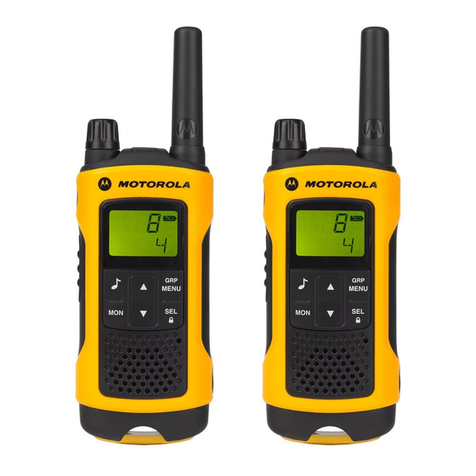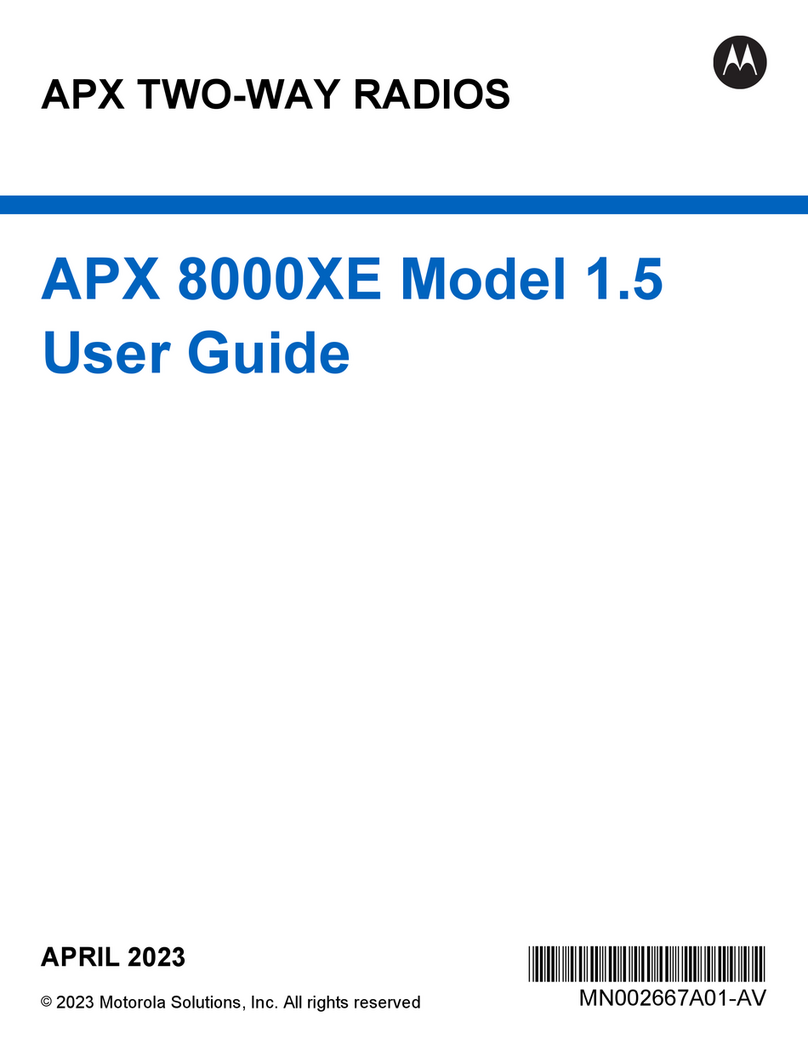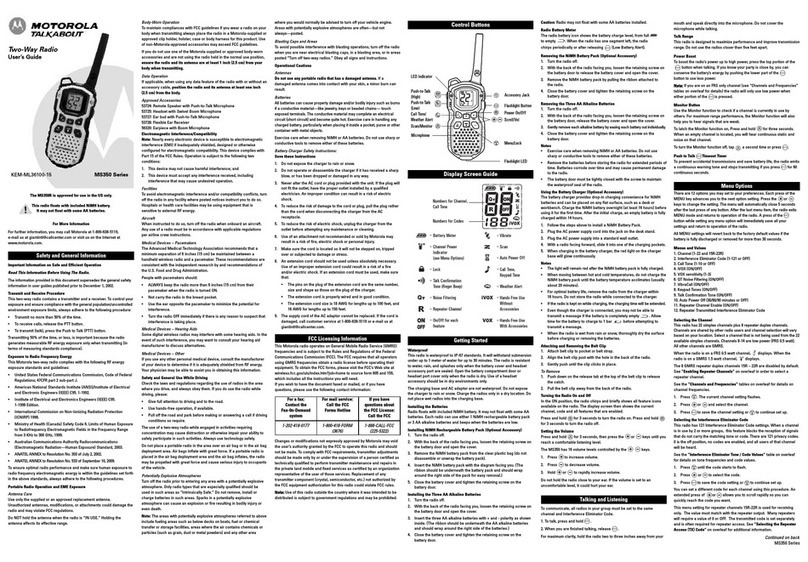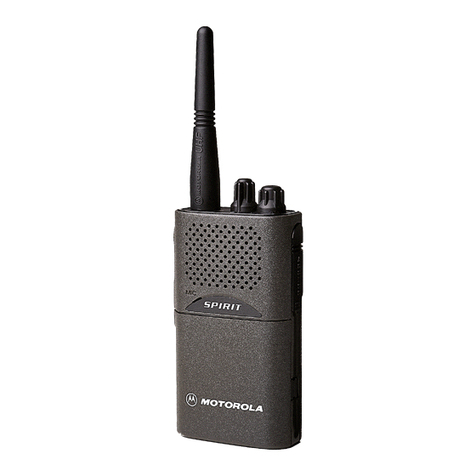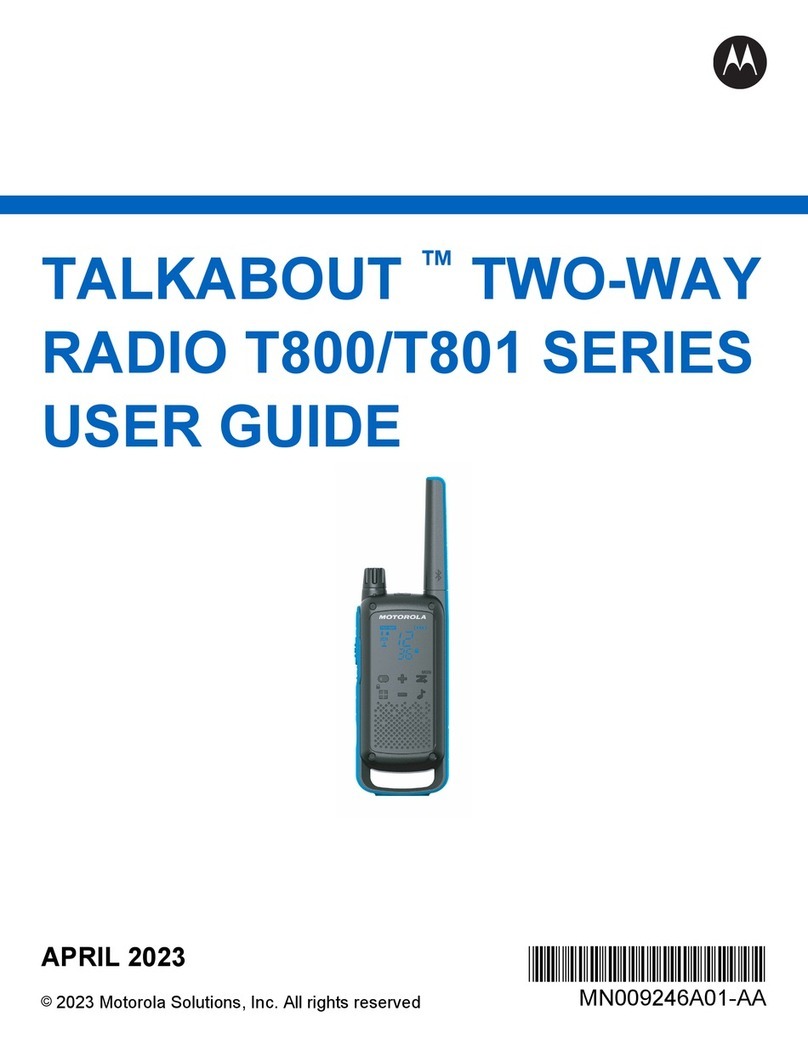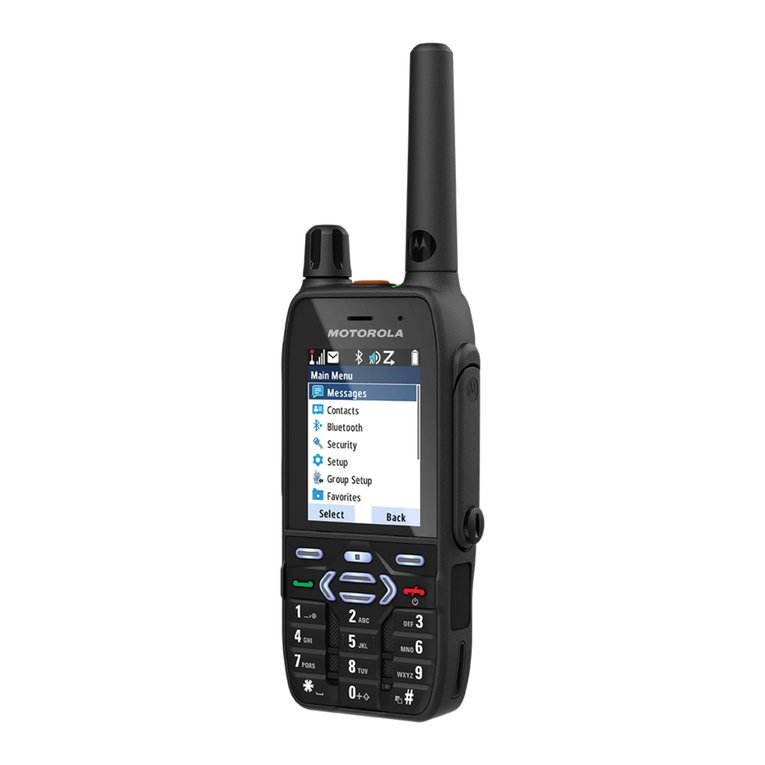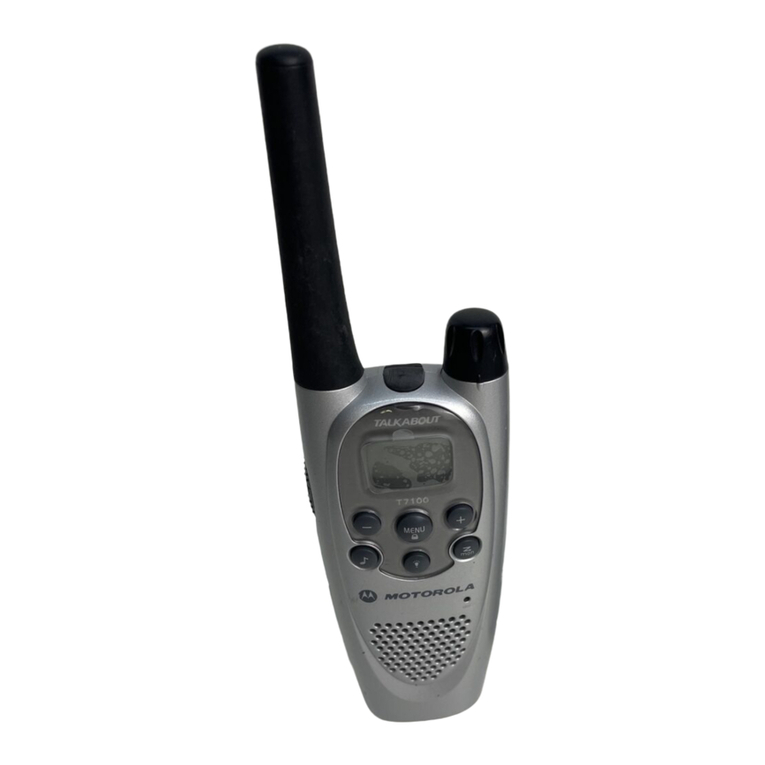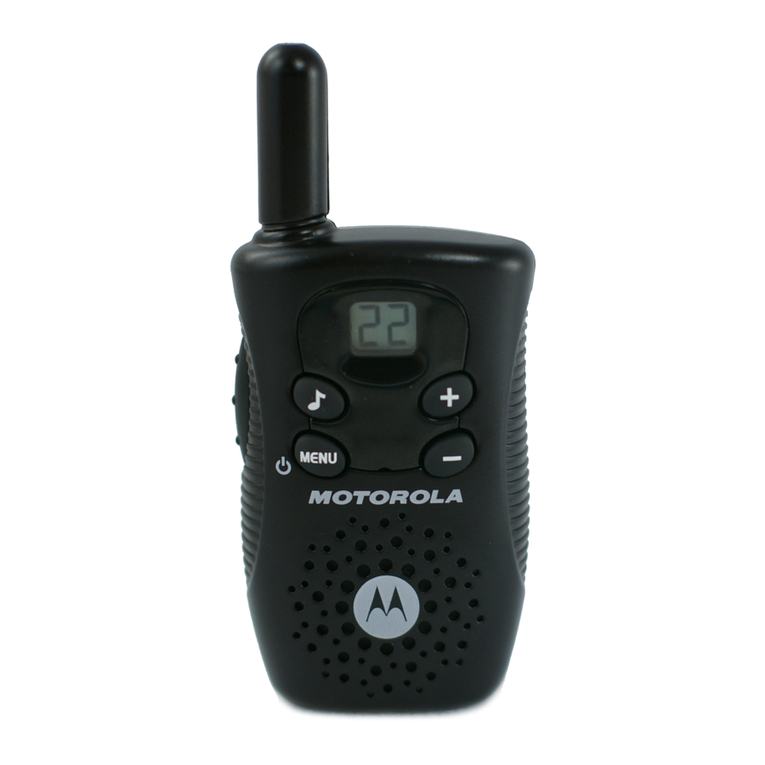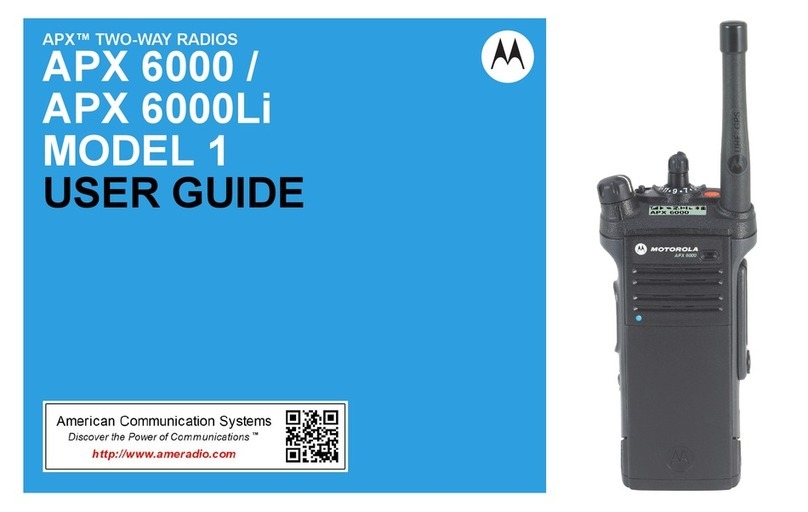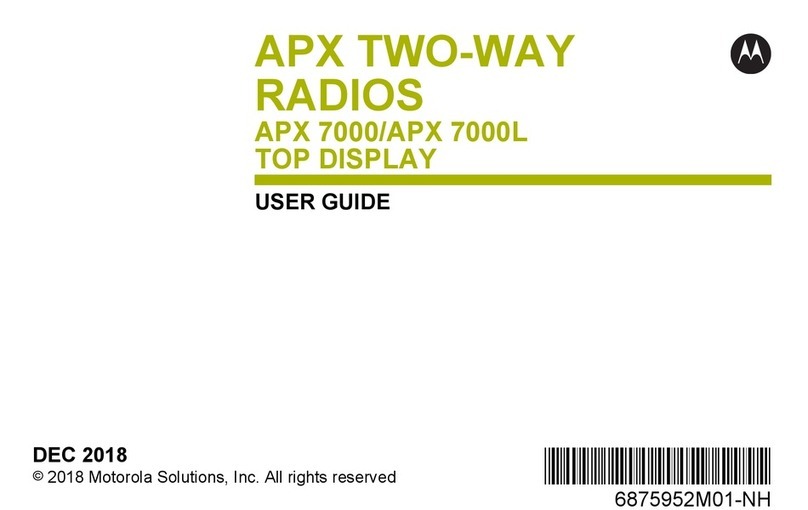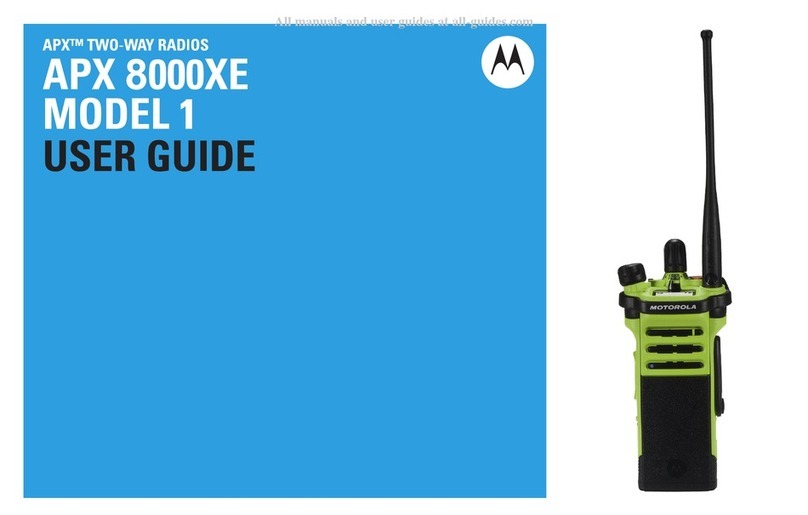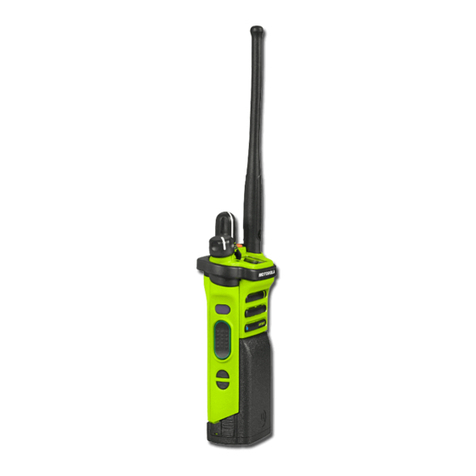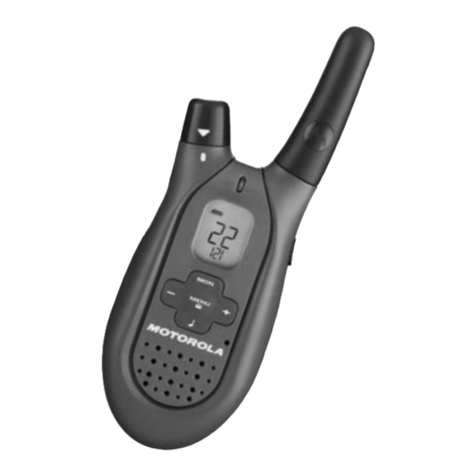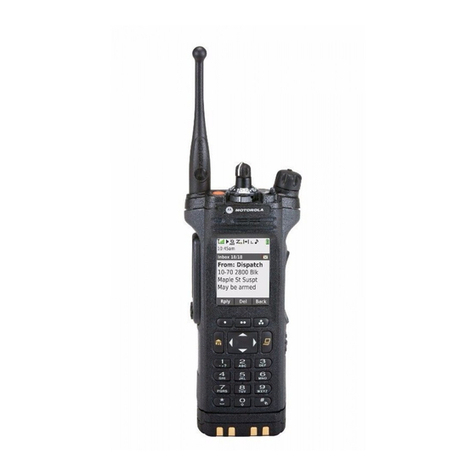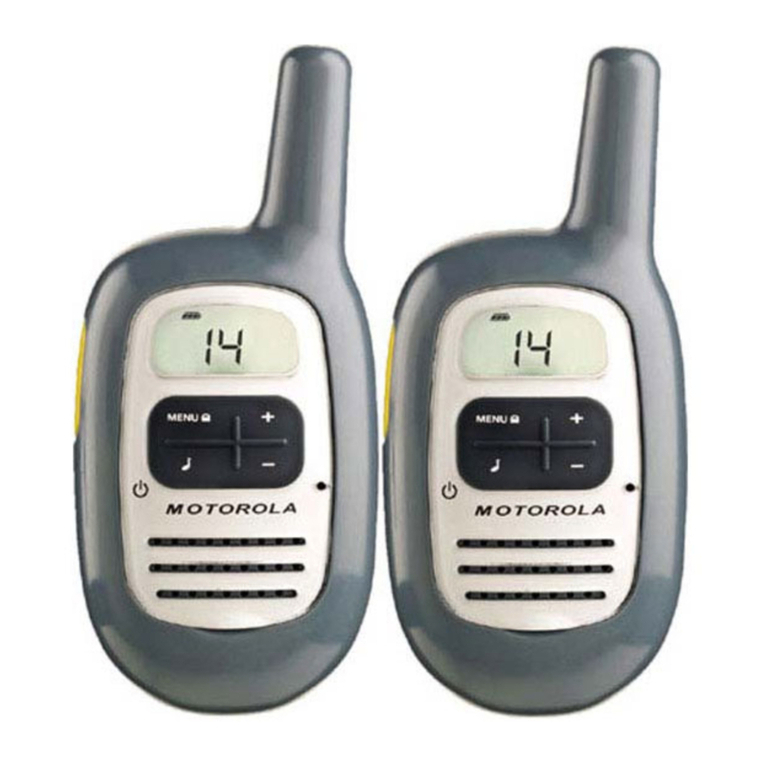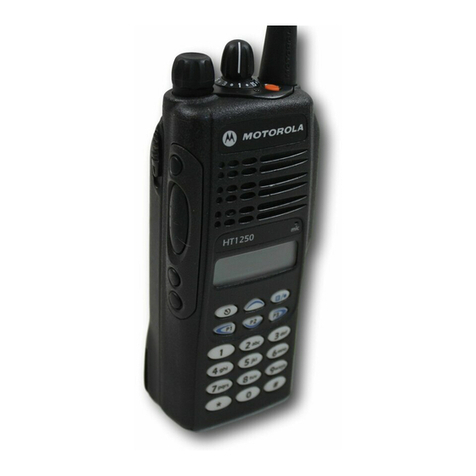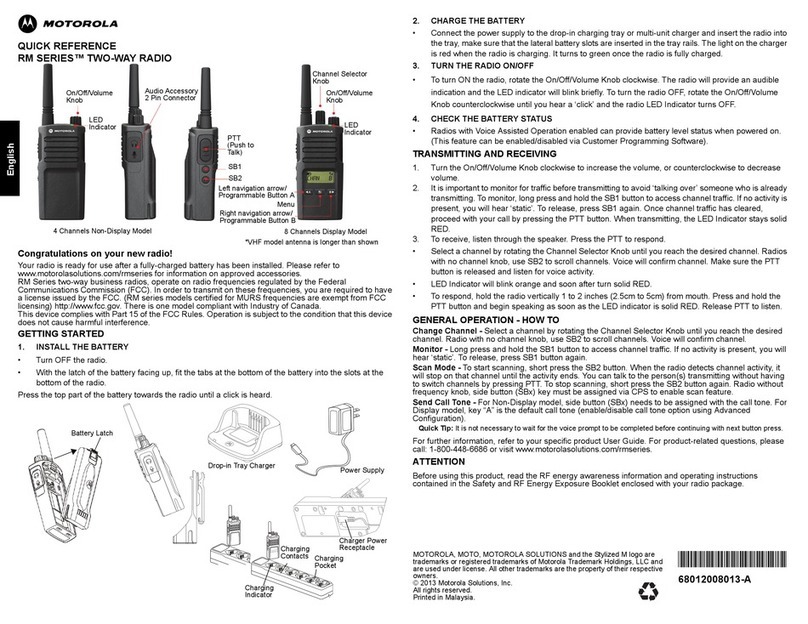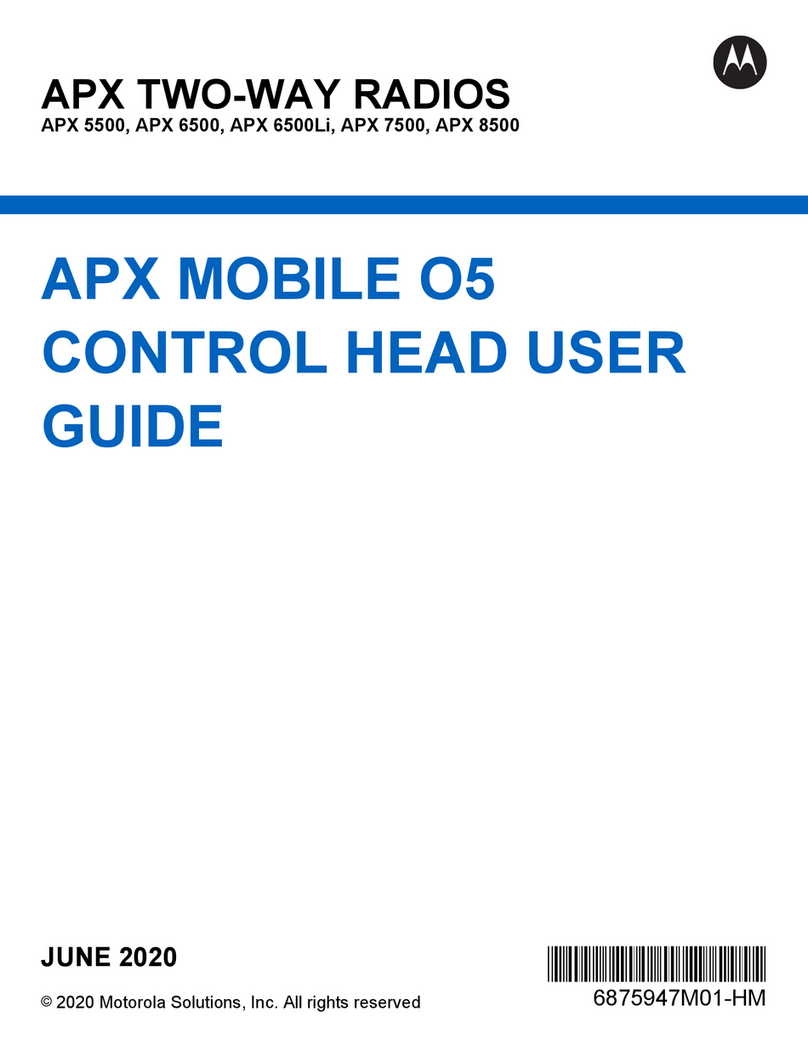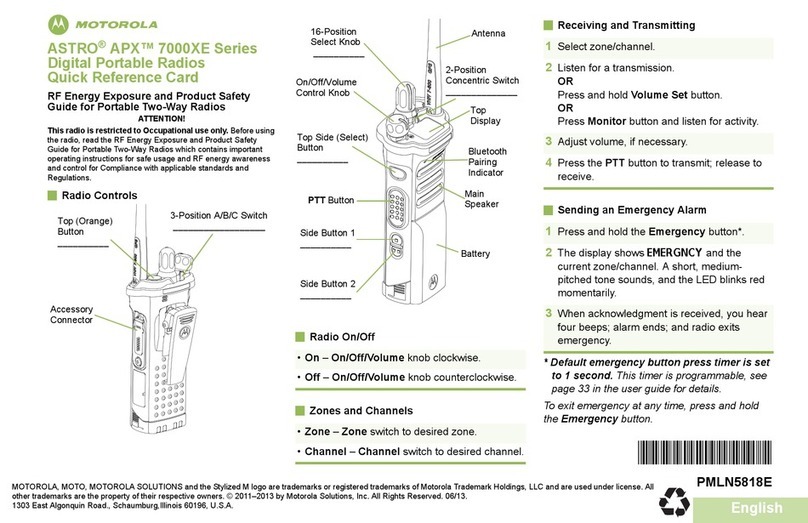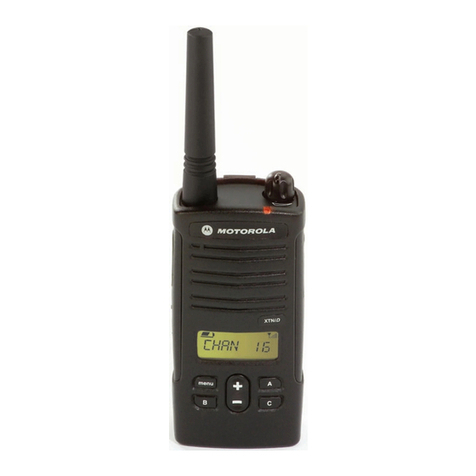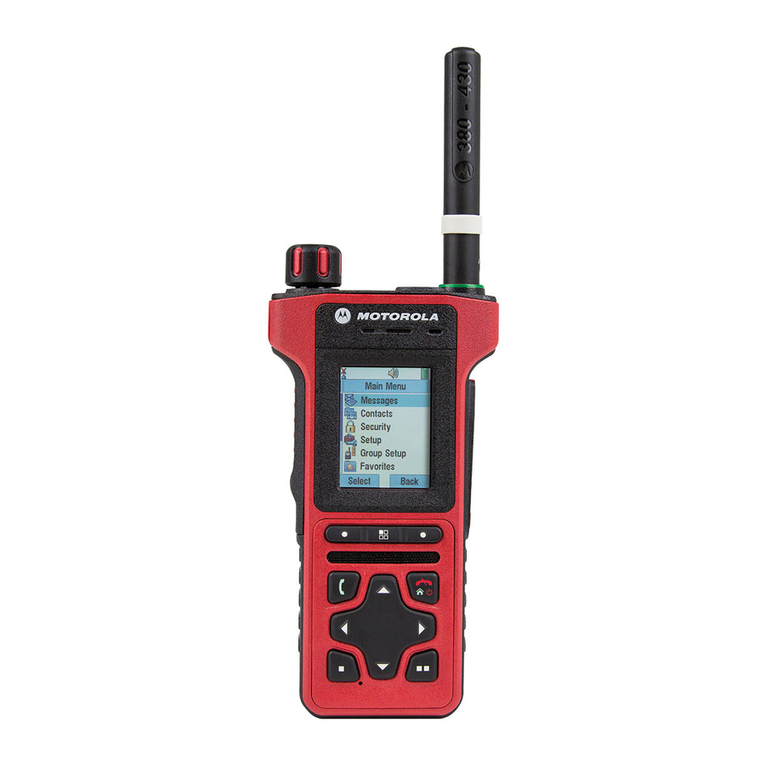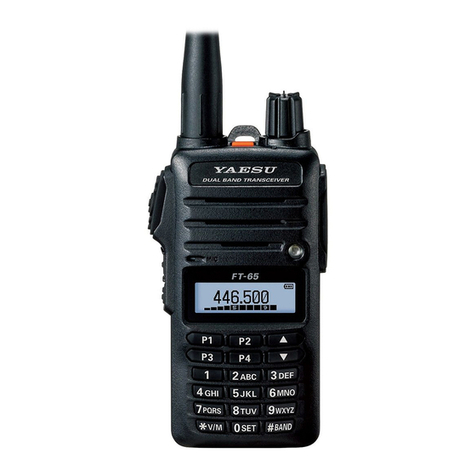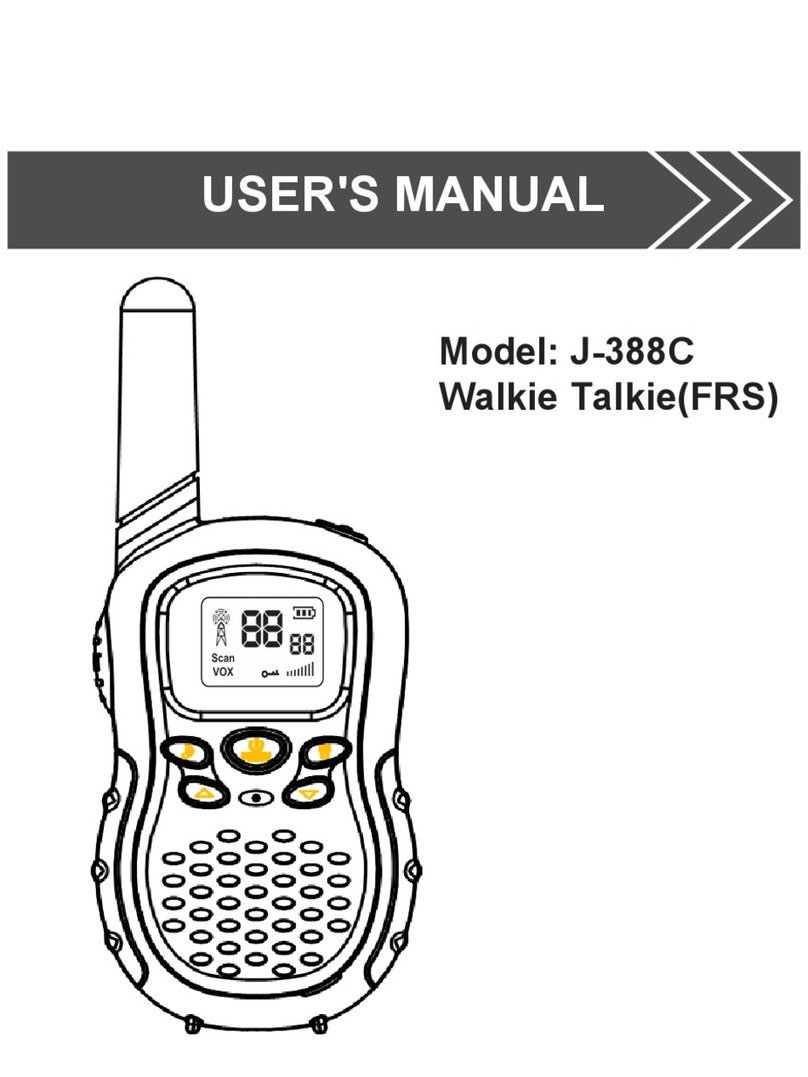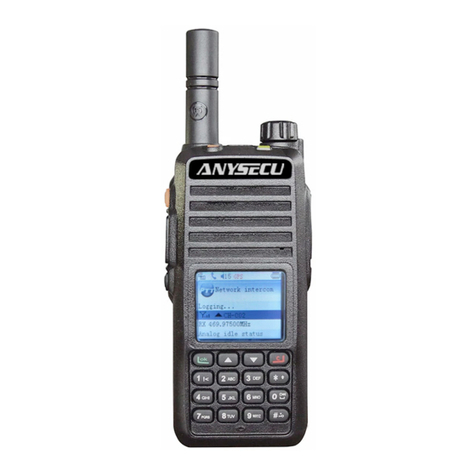Before You Can Talk
Read this manual carefully. Make sure you know how to properly operate the
radio before use.Talkaboutradios have 14channels and 38 Interference
EliminatorCodes. Totalkto others, all radiosin your group must be set to the
same channel and code.
Power Button
Turning the Radio On:
1. Press orange Power button,radio beeps
and LEDIndicatorLight flashes every 3
seconds to indicate radio is on.Figure 11.
2. To turn radio off, press Power button until
display clears. Radiobeeps toconfirm.
Note:
Whenyouturntheradioonyouarein
normal operating mode.
Channels
You can only communicate with radios that are set on the same channel and
code. The chart on page 30 shows you channel frequencies on which
Motorola Family Radio Service (FRS) two-way radios operate.
Setting the Channel
Changing the Channel:
1. With radio on,press Menu button once.
CHAN appears and current channel
(large number) will flash. Figure 12.
2. Use the Scroll buttons to selecta new
channel.
3. Press Push-To-Talk button to set new
channel selection.
Note:
The radio willreturn tonormal operation
mode in 10 seconds or after pressing Push-To-Talk button.
nterference Eliminator Codes
Codes filter out static, noise andunwanted
messages on radio channels. You can only
communicate with radios using the same chan-
nel and code. Since radio channels can be
monitored, this will not make yourconversa-
tions private. To avoid congested channels,
change the radio’s channel/code setting.
Setting the Code
Changing the Code
1. With radio on, press Menu button twice. The
current Code (small number) will flash.Figure 13.
2. Use Scroll buttons to selecta new code.
3. Press Push-To-Talk button to setnew code selection.
Notes:
• The channel and code may be set sequentially. Just hit the Menu but-
ton after setting a new channel to selecta new code.
• The radio will return to normal operation mode in 10seconds or after
pressing Push-To-Talk button.
Custom Codes - T289 Only
TheT289 hastheability to save a specific codefor each channel.Thisallows
you to change channel and codes more easily. To save a specific code for
each channel, set thechannel and code per the previous instructions. Press
theMenubuttononcefromnormaloperatingmodeandusetheScrollButtons
to switch between selectedchanneland code settings.
Figure 11.
Figure 12.
12 13
Figure 13.
